#ConnectedLearning
Explore tagged Tumblr posts
Text
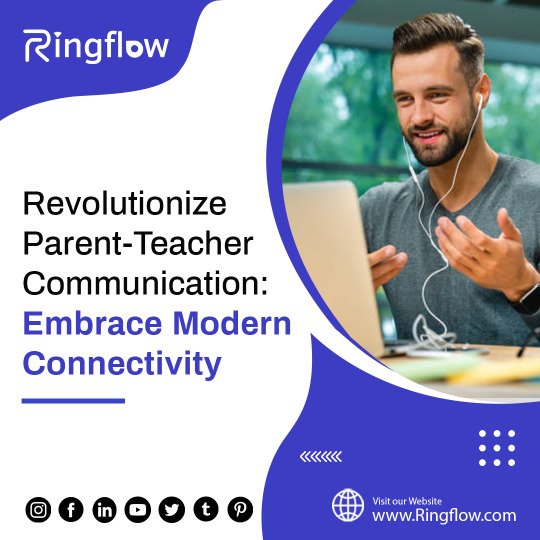
Revolutionize Parent-Teacher Communication: Embrace Modern Connectivity
Empower parent-teacher communication with modern connectivity. Our innovative cloud-based solution ensures seamless and effective collaboration, fostering a strong educational community
For more information : https://lnkd.in/du3v64sd
Contact Us : 👉 Email:- [email protected] 👉 WhatsApp:- +1 917-254-4289
#ParentTeacherCollaboration#EffortlessCommunication#EducationTransformation#ConnectedSchools#ModernConnectivity#EfficientCommunication#StreamlinedCommunication#ConnectedLearning#EfficientSchoolOperations#CloudConnectivity
1 note
·
View note
Text

Connecting ATL Skills | Enhancing Student Learning | MLSI
ATL skills interconnect to build a strong foundation of learning strategies in the IB curriculum.
0 notes
Text
How Online School Management Systems Enhance Parental Involvement

Parental involvement is a critical factor in a student's academic success and overall development. However, keeping parents actively engaged in their child's education can be challenging, especially with the hectic schedules of both parents and schools. This is where an Online School Management System like CuteBrains comes into play. By leveraging digital tools and platforms, these systems make it easier for parents to stay informed, engaged, and supportive throughout their child’s learning journey. Here's how:
1. Real-Time Access to Student Information
With an Online School Management System, parents can access real-time information about their child's academic performance, attendance, and behavior. Whether it's viewing grades, monitoring attendance, or checking progress reports, parents can stay updated at all times, helping them to identify areas where their child might need additional support.
2. Streamlined Communication Channels
Effective communication between parents and schools is crucial for fostering a collaborative learning environment. Online School Management Systems offer built-in communication tools like SMS, email, and even WhatsApp integration. This allows teachers and school administrators to quickly send out announcements, updates, or urgent notifications, ensuring parents are always in the loop.
3. Simplified Fee Payments
Gone are the days of manual fee payments and endless queues at the school office. With an integrated Online Payment Gateway, parents can securely pay school fees, purchase uniforms, and make other payments directly through the school’s digital platform. This convenience reduces stress for parents and ensures timely payments, benefiting the school as well.
4. Enhanced Participation in School Activities
Parents can easily access school calendars, event schedules, and notices about upcoming activities through the system. This transparency encourages parents to participate more actively in school events, meetings, and extracurricular activities, fostering a stronger school community.
5. Instant Alerts and Notifications
Online School Management Systems provide automated alerts for critical updates like upcoming exams, fee deadlines, or unexpected school closures. These notifications ensure that parents never miss important information, enhancing their engagement in their child’s education.
6. Access to Learning Resources
Many modern school management systems integrate with Learning Management Systems (LMS) like Moodle, allowing parents to view the curriculum, assignments, and even digital learning materials. This access helps parents understand what their child is learning and how they can provide additional support at home.
7. Data-Driven Insights
Parents can access detailed analytics and reports about their child's performance, including grades, attendance records, and behavioral assessments. These insights empower parents to have more meaningful conversations with teachers and provide targeted support to their children.
8. Improved Parent-Teacher Collaboration
Online platforms make it easy to schedule parent-teacher meetings, share student progress reports, and communicate any concerns. This regular and open line of communication enhances collaboration between parents and educators, ultimately supporting student success.
9. User-Friendly Interface
An effective Online School Management System provides a user-friendly interface that is easy for parents to navigate, even for those who may not be tech-savvy. This accessibility ensures all parents, regardless of their technological proficiency, can stay engaged with their child's education.
10. Building a Stronger School Community
By keeping parents informed and involved, an Online School Management System helps build a stronger school community. When parents feel connected to the school, they are more likely to contribute to the school’s development, participate in events, and support its initiatives.
Why Choose CuteBrains?
CuteBrains takes parental involvement to the next level with its comprehensive school management platform. As India’s first Moodle-integrated system, CuteBrains offers a seamless connection between school administration, teachers, students, and parents. With features like real-time attendance updates, secure fee payments, instant notifications, and easy access to learning resources, CuteBrains makes sure that parents are always a key part of the educational journey.
Invest in CuteBrains today and watch as parental involvement in your school grows, leading to better academic outcomes and a more vibrant school community.
#edtech#education#moodle#school#school erp#ParentalEngagement#DigitalLearning#educationinnovation#SchoolManagement#ConnectedLearning#StudentSuccess#FutureOfEducation#OnlineEducation#SmartSchools
1 note
·
View note
Text
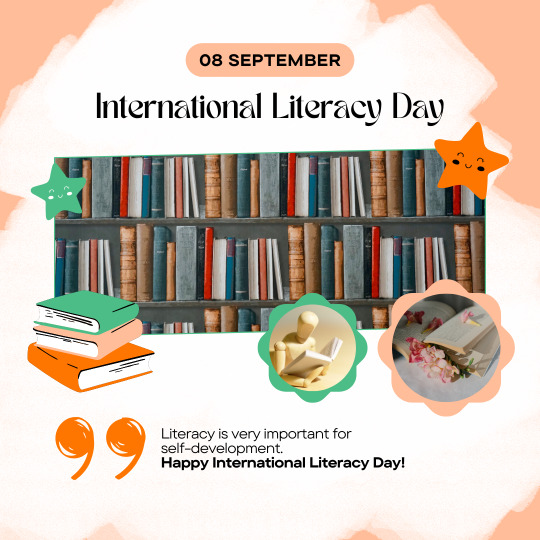
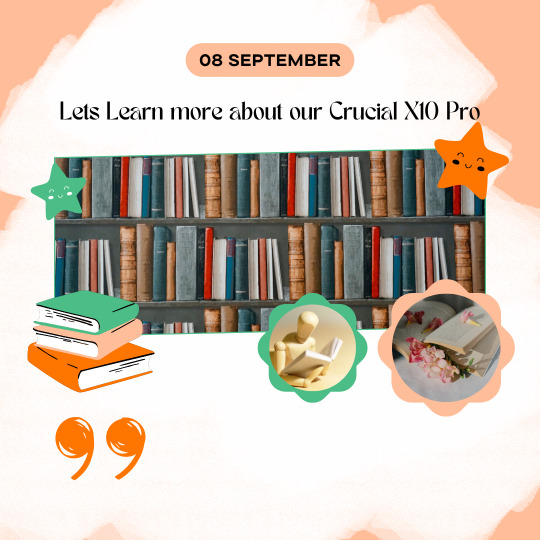
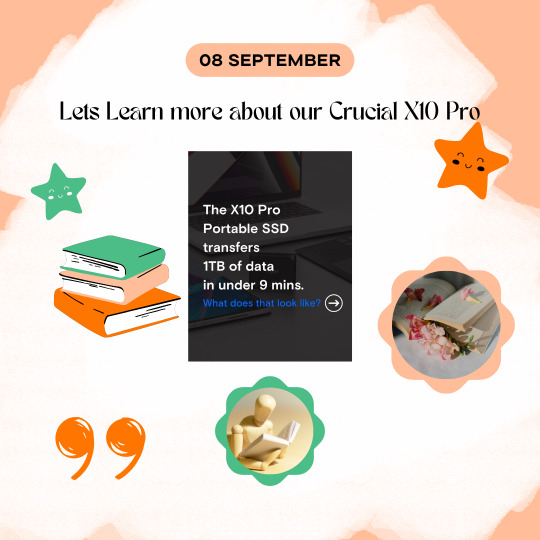
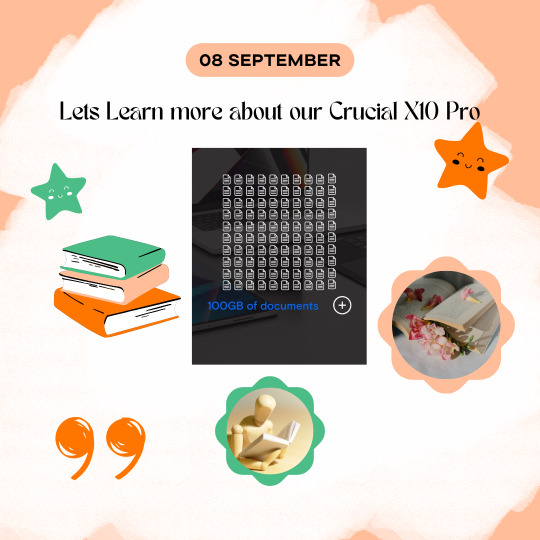
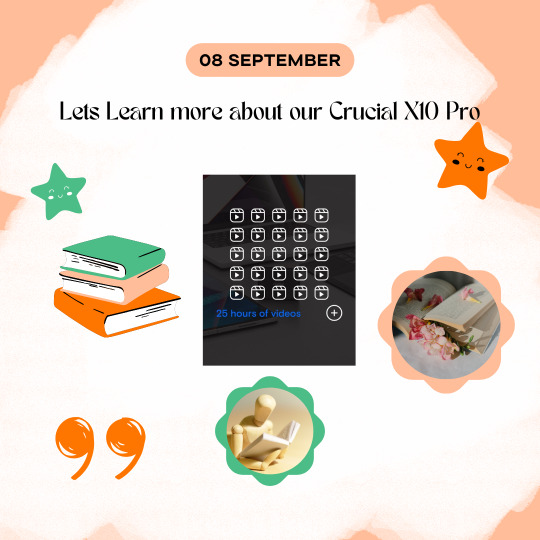
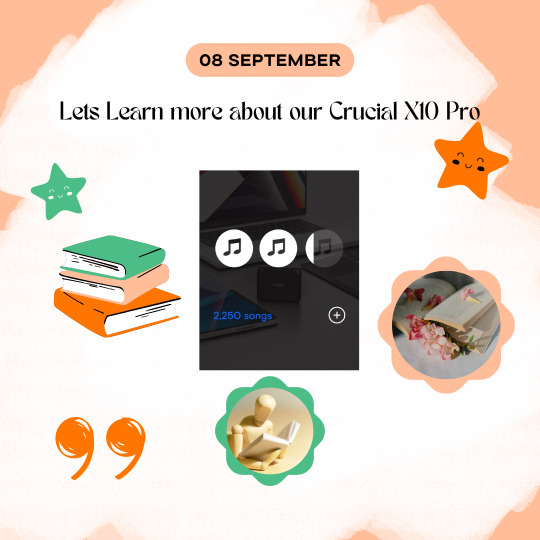
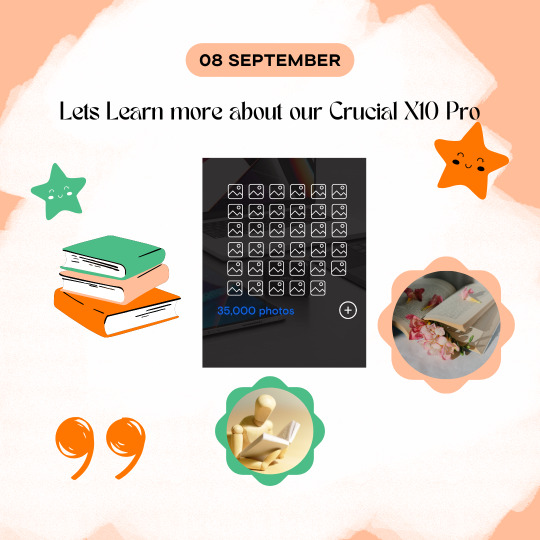
International Literacy Day
Unlocking knowledge, one page at a time 📚✨ On International Literacy Day, we celebrate the power of education and the endless possibilities it brings. 🌟 Join us in raising awareness, not just about literacy, but also about the incredible potential of technology like the Crucial X10 Pro to enhance learning and connect minds.
#💡📱#LiteracyDay#EmpowerThroughEducation#CrucialX10Pro#luckyfalcon#crucial#dubai#uae#InternationalLiteracyDay#EducationMatters#UnlockKnowledge#LiteracyForAll#ReadingIsPower#TechForLearning#DigitalLiteracy#EdTech#ConnectedLearning#LearnWithTech#KnowledgeIsKey#EnhancedLearning#LiteracyAwareness
0 notes
Photo
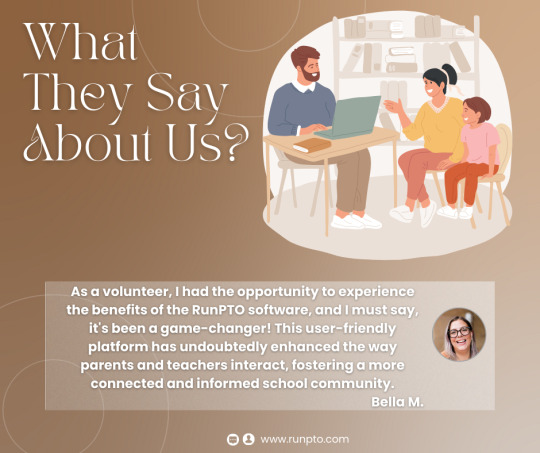
Thank you for your kind words! We're thrilled to hear how our RunPTO software has positively impacted your school community. Your review motivates us to keep fostering better parent-teacher interactions and creating a stronger educational experience for all. #Grateful #PTASoftware #SchoolCommunity #EducationRevolution #ParentTeacherPartnership #ConnectedLearning #EmpoweringEducation #PTOSuccess #SchoolEngagement #HappyClients
0 notes
Text
Teaching Writing in the time of COVID-19
Written for a class I am teaching called Teaching Writing Online at Johns Hopkins; posted originally in class Blackboard blog (which isn’t really a blog at all) in response to the prompt “Teaching writing in the time of COVID-19.”
Weeks before COVID officially hit the States, it was in the news in China. My partner had been to Beijing for work in late November/early December when things were still fairly normal. But a few weeks after his return, the city of Wuhan had shut down. He got in touch with his colleagues via WeChat to find out how they were and what was going on. Within a week or so they were also homebound, work and school closed down throughout Beijing and Shanghai.
“Millions of children are now going to school online” he said to me one morning. This is when I really started to take note. Millions of kids out of school, stuck at home, online learning. Wow. And uh oh.
It would be another few weeks before it was here.
I live in Philadelphia. In Philly, during the previous months, a few schools had actually already closed due to crumbling asbestos found in public areas of the school, including the gyms and cafeterias. Parents were protesting and some were already keeping kids home. It was just a handful of schools but, having gone to these schools myself as a kid and visiting them as an adult from time to time, I know that this is a much bigger problem than just a few schools, especially in buildings of a certain era. It was not clear what would happen, how the district would respond to the growing public knowledge and concern about this issue, what were plans for addressing it at speed or scale, and what funds could be accessed to repair these old buildings and crumbling facilities.
But COVID changed that, quickly. School closed down (still with active asbestos) and thousands of children were sent home. And the disparities of our city that we know about - the poverty and the underfunding of our public schools -- opened like crackling and veining crevasses throughout the streets and neighborhoods of our city.
What became clear immediately is that many Philadelphian children needed lunch since food insecurity is high and school was the one place where they could be guaranteed a meal each day; getting food to them and also providing a place for them to be if needed was the first priority. Then a second piece was to make sure that kids had access to technology they could use to stay connected to their teachers and peers and Chromebooks were distributed to families (sometimes at real risk to those who had to hand them out). Challenges continued and despite being the home of Comcast, the lack of Internet access and broadband in homes throughout the city is determined by income. The district website even, at one point, suggested finding “parking lot wifi” after failing to figure out how to get community-wide access. Long time educational reporters Dale Mezzacappa and Bill Hangley Jr. write in the Public School Notebook that “Wealthier districts have a "10-year head start" on devices, online access, and virtual curriculum.” compared to Philadelphia.
As the school year winds down, planning continues and CDC guidelines (the full one not the White House one) are being used to plan what to do come the Fall. Hangley writes that nothing is clear except that “the coronavirus hits low-income and minority communities hardest, and students like Philadelphia’s are at the greatest risk.”
The disparities that we have know for years now are on full display again after the murder of George Floyd and the unequal impact of COVID on black and brown communities throughout the United States. And, as challenging as it is, I also believe that much of what has been deemed “impossible” has proved to actually be possible. We can rethink the way we function and close down if we need to to keep safe. We can uprise if we need to to protest systemic inequities. So in these possibilities I also see opportunities for us as teachers and learners. It is an opportunity to really look squarely at what is unjust and inequitable. It is also an opportunity to re-think, re-imagine, re-prioritize what is most important in education and schooling (and many are; will work to put a list together).
State testing was dropped for this school year, for example. What could school be if it were less focused on testing and competition of children to show “merit” for higher education and instead asked kids to do real work in the world, supported by teachers and mentors and communities? What if kids were asked to participate meaningfully in their communities at school and at home and did research on topics of deep interests and importance to them, like food insecurity, and were asked to use their voice to share what they learned and advocate for what is needed? What if they had an opportunity to do work that contributed -- how much would we all gain? How fast could we come up with solutions and better understandings of pandemics like COVID if we had all these young minds considering the possibilities alongside us adults? What if kids were engaged in learning by doing - and writing - in ways that build democracy and dismantle racist systems instead of teaching kids how to follow rules and act in compliance to a set of demands created by adults without their consultation?
What would writing, learning and teaching look like then?
1 note
·
View note
Text
Digital Citizenship 101
When we think of citizenship we often think of being citizens of a place, country, community, etc. However, when it comes to citizenship in the digital space it can often be a mysterious and perplexing concept to consider. We can define digital as “involving or relating to the use of computer technology.” Pretty simple and straightforward for all of us in the digital world, right? But when we tie in citizenship, which can be defined as “the position or status of being a citizen of a particular country,” the understanding changes. Now, when we consider the two together, we can define digital citizenship as the “ability to practice and advocate online behavior that demonstrates legal, ethical, safe, and responsible uses of information and communication technologies (Greenhow & Ribble, 2009, p. 125). With this in mind, we can see that digital citizenship is a key facet in our growing digital age and is an essential skill that needs to be taught to the youth and understood/followed by those who currently interact with digital platforms. Respectful and knowledgeable online environments are always a good idea!
When this definition of digital citizenship is considered, the relation to digital literacy is strong. They both work to improve online environments and teach users to take note of what is safe and what is not. Users that are both digitally literate and have digital citizenship are more inclined to safeguard their private information, respect themselves and others, carefully manage their digital footprint, and stay safe online. However, the key difference between the two is the fact that digital literacy focuses more on the user's ability to read and analyze situations and act on them as they see fit. On the other hand, digital citizenship focuses more on the quality of these interactions and habits that impact the content output and the communities they are associated with.
While digital citizenship is important for all digital users and communities, it is most important to consider implementing and teaching these concepts in the classroom to younger children. With technology being used more and more in the classroom, it is important to teach students to be knowledgeable, respectful, and aware of their actions and interactions with others. Due to this digital shift, educators are realizing the importance of teaching these programs to their students and are implementing programs such as Common Sense media’s K-12 Digital Citizenship Curriculum. According to an article by Edscoop, research from Project Zero at the Harvard Graduate School of Education shows that educators’ top concerns regarding digital citizenship are cyberbullying, sexting, fake news, and digital well-being.
Overall, digital users need to understand this concept of digital citizenship to ensure safe and valuable online interactions. There are many resources to explore digital citizenship such as platforms such as Common Sense Education, DigitalCitizenship.net, and ISTE.org. When we take the time to understand how we can be better digital citizens, we set up ourselves and others for a more beneficial online community and digital space.
1 note
·
View note
Text
🗣 Blog Post #2: Social Media & Participatory Culture
Throughout this paper, I’m going to talk about social media and how it is correlated with participatory culture. Before we even start, what is participatory culture? Participatory culture is defined by new learning online as “a culture where there are low barriers to artistic expression and civic occasions.”. Not only that Henry Jenkins defines participatory culture as a culture where we make media as well as consume it”. He continues to explain participatory culture as a strong support for sharing contact with others, informal, mentorship, members, believing their contributions matter, and care about others, opinions of self, and work.”. What does this mean? This means that participatory culture is a culture that allows people via social media to be them, true selves and create artistic expression through the form of whatever social media platform you choose to use. For example, say you’re on Instagram. Participatory culture would look like people that are participating in contributing value, diverse opinions, and comments on each other's posts, while embracing everyone’s perspective in everyone's fashion. The reason why I say this is an example is because being able to embrace everyone’s perspective and ways of contribution allows us to continue to grow as human beings and the ways of participatory culture.
Let’s talk about how Content is being made by people throughout the world, and why it’s important to create content that is not only artistic and passionate, and that expresses yourself as a person. “Creating content not only involves creativity, but also time, motion, and various forms of capital (social, cultural, and sometimes economic)” (Hinton & Hjorth, 2013). The reason for why I’m bringing this part of the text up is so that we can continue to understand that not everything in social media is a simple, personal blog or a selfie. A lot of things and the majority of the things in social media are planned out, strategized, researched, artistically expressed. Many of the things that we see in social media are things that are either educators or things that are therefore in entertainment mainly.
We are going to talk about different ways on how to practice participatory culture within your life. One way to practice it between cultures in your life is by building a community telling stories and producing media. And being able to do this, will allow you to be distinctive and create something that is very valuable in your life. Another way that you can practice participatory culture is by being informed. What being informed in the participatory culture looks like it is by spreading the word, and then learning about the issues that are taking place. You could also practice participatory culture by connecting with others, and branching out beyond your group by networking yourself. This is very important because being able to network yourself throughout your life, and throughout social media will allow you to explore and be more innovative than what you initially thought. Overall, practicing participatory culture will allow you to become more of the experts in the world and you to become truly adaptive and innovative to what the world has entailed.
To finish up, let’s talk about the main benefits that come with participatory culture. Aside from the abilities to express oneself, what does participatory culture bring to the table in human lives? Its participatory culture is truly everywhere in our human life whether it’s in its Snapchat series where you’re looking at I’m boxing videos or other people sharing contacts or even you attending an event to improve on site appearances. Participatory culture brings benefits of community and other benefits of perspective and gaining knowledge. Overall participatory culture is something that continues to grow within social media, and something that continues to impact us on a daily basis.
0 notes
Text
Connected Learning and Equity in Education
Working in the field of special education, and working with students who are on the spectrum, I am no stranger to the inequalities that exist in education. All of my students are limited in certain skill sets that come more easily to some of their typically developing peers, thereby creating an unequal playing field. With that said, this inequality is not specific to my students, as there are a number of students at the high school who find themselves on that same unequal playing field. These students find themselves on that unequal playing field due to socio-economic status, language barriers, opportunities, and so on and so forth. Therefore, it is our duty as educators to do our best to ensure that our students have what they need in order to become successful. Will it always be fair that some students receive more supports than others? Not necessarily. However, fair does not equate equity; rather, fair enables for equity as every person then ends up on that very much desired level playing field.
youtube
Not only is Olivia Chapman a student giving this TED Talk, but she is so insightful, despite not having a lot of life experience. This only further proves how equity and equality go hand in hand.
Always,
Ms. J
1 note
·
View note
Text
DIGITAL CITIZENSHIP AND DIGITAL LITERACY. WHAT ARE THEY? AND HOW TO IMPLEMENT BOTH.
Digital Literacy is about knowing how to navigate social media and understanding others and how it is used to utilize it. Digital citizenship is how oneself uses social media and the decisions that impact one's well being. Such as understanding what is being consumed online whether it is trustworthy or whether it makes people feel good. Digital citizenship is also understanding how to create content that is worthwhile and trustworthy as well. Digital literacy is understanding media and the diversity of others that are on it and how to communicate and collaboration with others, while digital citizenship is about having the content be in a positive manner for the common good and beneficial consequences. Literacy helps us understand how to use citizenship for the good.
According to Barbra Bray and Kathleen McClaskey, digital literacy is not just about reading text it also involves content which includes writing in digital format (Bray & McClaskey). This goes with what I mentioned before how to navigate through social media and understand but also being able to communicate and write. Whether it is in tweet form, blog, or instant messaging. Bray and Mcklaskey then describe digital citizenship as the norms of using technology as well as what is appropriate and responsible behavior (Bray & McClaskey). The key is to citizenship is appropriate and responsible while online. Respecting others but they didn’t seem to mention how to make it a positive impact which I believe is a very important part. Digital literacy is what one understands of what is appropriate or not; digital citizenship is to use the knowledge of what is appropriate to post content that hopefully has a positive impact on others online in the community.
Nate Green in his article about teaching #DigCit and #DigLit says,
“The key to helping students make good decisions online is to mentor them in their spaces and allow them to pursue their interests” (Green).
Which I believe is a great way to incorporate learning. For adults and kids, going to a workshop per se and learning about how to use online while not being online, or even learning about sites that they may not even use would not be helpful The best way to go about it is teaching where they already are in the online world. Even in job fore, having specific guidance of digital literacy and citizenship among what media bases are used within the job. Green suggests identifying interests, modeling how to set it up, encourage creating and sharing, and practicing what you preach (Green). This shows how to encourage and support both digital citizenship and literacy. To model how to set up a social media account, how it is used, and the quirks to it which he mentioned all contains digital literacy of understanding. To encourage creating and sharing and practicing what you preach in a respectable way is digital citizenship. This could work with all ages, whether it is an account for a company or kids in school starting social media.
Other Useful Articles/Videos:
Developing digital literacy skills
- https://www.webwise.ie/teachers/digital_literacy/
Common Sense Digital Citizenship Video
- https://www.commonsense.org/education/video/digital-citizenship
Turning digital natives into digital citizens
- https://www.youtube.com/watch?v=M6cS9uR1NRA
Articles mentioned:
Green, N. (2019, March 12). Teaching #MediaLit and
#DigCit? Start with social media: ISTE International Society for Technology
in Education. Retrieved July 12, 2019, from
https://www.iste.org/explore/digital-and-media-literacy/Teaching-#MediaLit-
and-#DigCit?-Start-with-social-media
Bray, Barbara & Kathleen McClaskey (2017, February 13). Digital Literacy and
Digital Citizenship. Retrieved July 12, 2019, from
http://www.personalizelearning.com/2017/02/digital-literacy-and-digital-
citizenship.html
#SocialMediaLearning#digital literacy#diglit#digitalcitizenship#DigCit#SocialMedia#connectedlearning
0 notes
Text
Social Media & Participatory Culture
The information that y'all will be able to take away from my post today is a better understanding of what the Participatory Culture Theory is and how it is important. So you are all probably thinking, what even is the participatory culture theory and how does it relate to social media? The Participatory Culture Theory focuses on how there is a shift in focus from an individual level to a community level involving social connection (Jenkins, Puroshotma, Clinton, Weigel, & Robison, 2009). This theory is what helps us point out and understand, at a deeper level, why/how digital media with online technologies have grown substantially and continues to grow everyday. First of all, I think that definition shows already how important this theory is (without being able to define and understand the digital media/online technology growth, well we would all be a bit lost).
The Participation Culture Theory relates to social media in the aspect of changes in the techniques of posting to our social media pages and reflecting on our peer’s social media posts. Participation Culture involves a strong support for creating and sharing your creations with other people, involves people believing that their post and comments are important not just to themselves but others as well, involves people feeling a social connection to others and much more (Jenkins, Puroshotma, Clinton, Weigel, & Robison, 2009). This theory relates to social media on such a high level. Now, instead of individual expression, the Participation Culture Theory puts emphasis on community involvement with the use of online technology. People that may not have been able to be socially connected using a digital media platform on an individual level, is supported by their community and gains more opportunities.
For me, my participation on social media definitely fluctuates on a weekly basis. Some weeks when I have a lot going on in my life, my participation on social media lacks and I barely engage with others (on a digital level). This last week was a stress heavy week and my participation on social media was kept to a minimum. I did not post anything on instagram or twitter or vsco. On snapchat, I did not get to posting anything myself but I enjoyed a couple stories posted by my friends and would reply back to them describing why I like their post. I also did this on Instagram. There were multiple posts by my friends that were exciting and I wanted to connect with them a bit deeper. For example, one of my good friends got married last week and she shared some videos/pictures from the whole wedding day activities. I loved what she had to share and I connected with her by commenting my thoughts on her wedding dress and overall wedding. I think what motivates me to get active and engage with the bigger community on social media is when my peers post videos/pictures/quotes that are intriguing to me and have a deeper connection to me, personally.
When my week is not as busy and I have the time to engage with social media, the social media platforms I use are Instagram, Snapchat, vsco and occasionally, Twitter. I am involved with these because my friends and family are involved with them as well. On Instagram, I share posts mostly about what I did with friends or family. For example, my most recent post was a picture of my dog and I at an apple orchard. I shared this because my dog means a lot to me and I was able to share with my friends, an exciting day of being with my dog and my parents. On snapchat, I mostly share random, exciting, or funny events that happen in my everyday life activities. I share these because it is fun to share experiences I go through with my friends and then I am able to connect with what they are doing as well. Vsco is my favorite social media platform. On vsco, you are not able to necessarily comment on peoples posts or see the number or likes/reports it receives (which is the reason it is my favorite). With this social media platform, you are able to share pictures and/or text and you are also able to repost/like the post that other people share. I think that this is such a fun way to connect with others because I am able to see fun pictures of friends and quotes that deal with their lives.
Overall the Participatory Culture Theory is associated with social media because it involves connected with others at a higher level. Instead of individually posting, it is socially connecting on a community level-- which is so much fun (if you ask me)!! The way the participation has changed and is certainly not done changing. Participation is a central element when understanding social media (Hinton and Hjorth, 2013). Participation and the way that it is seen on social media is continuing to change. We are able to connect with others and participate in a community conversation by being able to comment or repost other people’s posts. People are able to feel socially connected with others by the growth in participation techniques. “Great power comes with great responsibility” (Jerkins, 2010). This quote is so very important. With the growth in participation on social media, I think that it is very important to remember that with such power we need to make sure that we are connecting with others responsibly. We need to make sure that we are respecting ourselves and others, remembering that words speak loudly.
Sources:
Hjorth, Larissa, and Sam Hinton. “Chapter 4.” Understanding Social Media, SAGE Publications, 2013.
Jenkins, Henry, et al. “Confronting the Challenges of Participatory Culture.” Building the Field of Digital Media and Learning, 2009, doi:10.7551/mitpress/8435.001.0001.
“TEDxNYED.” Performance by Henry Jenkins, YouTube, 2010, youtu.be/AFCLKa0XRlw.
1 note
·
View note
Text
My Final Make
For my final make I wanted to create an online platform to connect my students and promote equity in learning. I teach high school Civics at a charter school in Philadelphia. Much of what we do as a class centers on student discussion. This “make” will hopefully further discussions for the remainder of this year and for years to come. After all, what we do in the classroom is about our students.
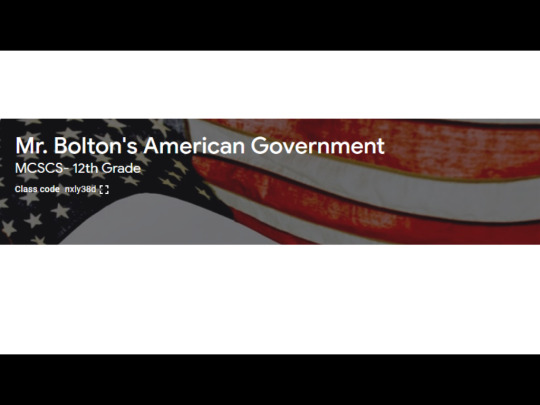
I laid the groundwork for my final project by creating a Google Classroom that encourages equitable access for students. I began by envisioning a platform that students can use during the day and also access after school to extend the lesson. One of my first ideas for a make in ED677 was an app that allows students to use their phones to complete pre-class assignments. Since smartphones are essentially an appendage of the 21st century adolescent, I figured we should use technology for good instead of evil. My make will serve as a place for my students to do just that- and more. In addition to PCAs, students can also you our online classroom to complete formative assessments and exit tickets. This classroom will essentially serve as a meeting place for the students to openly network ideas, produces “makes” themselves, and cultivate a shared purpose.
Once students leave for the day our Google Classroom will extend each lesson with the use of weekly discussion boards and study groups. In the long term I hope this make will enrich my Civics curriculum and ingrain the philosophies of connected learning into the leaders of tomorrow. This platform is the ideal place for students to promote their true identities. In the brick and mortar classroom some may feel inhibited but online they are free to express their opinions. Online classrooms are a medium that digital natives are comfortable with. By championing academically-oriented learning and discussing topics that interest urban adolescents, I have no doubt that my final make will elevate our discussions and further the growth of all my seniors.
This project serves the future interests of my students since it helps them prepare for college courses where they will be expected to collaborate online. Arcadia University offers many of its courses online. This is a trend in education that is convenient for students. Online offerings are also compatible with the demands of the 21st century professional workforce. It is my job as an educator to prepare my students to meet these demands.
Today’s educational and professional expectations are very high. To be a successful member of the work force you must incorporate the principles of connected learning into your life. People need to support each other and consult to provide feedback. We should work produce “makes” that have a shared purpose- these projects are most likely interest centered since we do our best work when we have an vested interest in what we’re doing. Lastly, we need to openly network in multiple settings. Online classrooms encourage transparency, ideas sharing and the rapid flow of information.
Without further delay please follow this LINK TO MY FINAL MAKE.
2 notes
·
View notes
Text
This is a great opening sentence by Kira Baker-Doyle; networked, connected teachers don’t just connect, they understand why, how and when...
0 notes
Photo

#First100Trucks #miniexcavator #connectedlearning #GavinTheGreat #BabyBeachomKelley 📚 (at North Braddock, Pennsylvania)
0 notes
Photo

Mizuko Ito, talking about connected learning at Schools of Tomorrow : kids interests--peer culture --opportunities for learning #hausderkulturenderwelt #schoolsoftomorrow #connectedlearning (at Haus der Kulturen der Welt)
0 notes
Text
Wobble, Wobble

Over the past couple of weeks I’ve been reading the blogs of teachers in my ED677 describing their wobbles after they read the introduction of Pose, Wobble, Flow by Cindy O’Donnell-Allen and Antero Garcia and were introduced to Storri organized by Bob Fecho. Wobbles have been on all of our minds … and tonight I can feel my own center shaking as I work myself into a new pose.
My wobble is related to a new way of trying to do assessment in ED677, a graduate course I teach that is part of a certificate program in Connected Learning at Arcadia University. It’s a fun course because the teachers bring so many different things to it and I learn so much along the way. The basic idea is that we work to be connected learners in order to learn what it means to design for connected teaching in equitable ways.
Peer-supported learning is a learning principle of Connected Learning and one that I have a lot of experience with given that most of my learning over the last 20 years has been through and at the writing project. My experience learning alongside peers draws me into wanting to find a peer-like position with participants in ED677, although I clearly am, in this case at a graduate school of education, the instructor.
So I am and have been experimenting with this notion -- how can I position myself more as a peer, although also, instructor. My ultimately goal is to the class to engage with each other as peers too and not to engage with me, or each other, based on notions of authority and compliance. I think this is hard in the context of a graduate program, which is so hierarchical, but I also believe it is necessary. As adult learners, we need to practice our own agency in learning -- in fact, as educators we must be the agents since we are directly responsible for other people’s learning.
All that is wobbly, yes. And instructionally there are various ways we’ve been doing it; and I think it’s mostly been good and fun. However, where it is most uneven and hard for me to position myself is around formal assessment, ie. grading. As the instructor, in a situation where no-grade or pass/fail is not an option, how do I best use this authority? This is the same question the teachers in my course are dealing with of course, vis a vis their students in schools where almost 100% of the time, grades are used to measure success. So I must participate with it and work alongside them to imagine what else is possible.
I’ve tried a few things in terms of summative assessment/grading: When I started ED677, for example, I set up a list of expectations for participation, each 20% worth of the overall grade, and then asked the teachers to assess their participation and reflect on the implications of their participation after completing their final project. They submitted this reflection and self-assessment to me and included any additional things I should keep in mind when determining the final grade; I came up with the grade based on that.
In the second year, I asked them to do this self-assessment again based on the same set of expectations, except this time around we stopped mid-way through the course, doing this same self-assessment two times instead of just once. This adjustment was made based on my perception that self-assessment felt a bit new to many in the class; also I believe that really assessment should be happening throughout and not just at the end. This seemed like a good move and supportive of questions and concerns coming up more quickly to me and not waiting for the final weeks.
In the third year then, I repeated this experiment essentially the same way. However during the course of that semester, Kira Baker-Doyle shared research at the 2017 Digital Media and Learning Conference on a Connected Learning Course in Teacher education where this idea of “participation” showed up as part of the set of expectations (Baker-Doyle, et al., In Press). Given that “participation” is such a nebulous word, she and her colleagues worked to define it a bit more clearly, breaking it down as part of a set of axis -- the x axis moving from isolated to more active/embedded, and the y axis moving from mandated to personal projects. They then described participation within the 4 segments and noted where learners are taking the highest risks and had the most vulnerability.

This got me thinking about my language overall, and the set of expectations that I had mapped out. It also got me thinking about the continuums here - from isolated to active, from mandated to personal. And it got me thinking about equity, and core value of ED677 that doesn’t show up anywhere in these participation axes. Ultimately I thought that I had some thinking to do as I entered the fourth year of teaching ED677.
And now here we are, the fourth year of this course. And this year, my assessment is entirely different and I am wobbling wobbling wondering what the implications will be. First, I shifted from a set of expectations that count for 20% each (but assessed by whom was not clear) into clear guidelines for the % around who is assessing what. I decided to try it this way this first year -- 70% of their grade is based on their self-assessment; 30% is based on my assessment. This delimitation felt more clear about the intended role of self-assessment and my assessment (although the percentages are still somewhat arbitrary - based on the low-bar idea that you can still pass with your own self-assessment only - and a work-in-progress).
Second, I worked to make the self-assessment much more supported and guided; and linked it to an opportunity to give anonymous instructor feedback at the same time. The guide for self-assessment in fact is something I worked on, then reworked, and then reworked again over the past few weeks. I finally settled on something that had 3 main guides -- one that is about their own connected learning, organized as a set of continuum related to core ideas; a second infographic created by Nicole Mirra that is about their interests and ambitions for connected teaching; and a third guide that is about the suggestions that I made about practicing while in ED677. The self-assessment questions are then based on those guided reflections and prompts for goals and plans forward. A link to give anonymous instructor feedback directly asked if and how they can best be supported.
I still plan to prompt this process twice -- once mid-semester and once at the end. Only the final one do they need to share with me. … We are mid-semester now and I just sent the teachers this new guide. I also asked them -- those that came to our bi-weekly meeting this week -- for their professional opinion on this process. I’m really anxious to learn -- is this helpful in supporting reflective processes on one’s own progress? Does it support agency and confidence in the learning? Does it support goal-setting and next step planning? That’s what I really care ultimately as their colleague and what feels important for connected learning and teaching.
Wobble Wobble. Here we go.
Reference:
Baker-Doyle, K.J., Whitfield, L. & Miller, K. (In Press) 'The whole world is networked': A Study of Connected Learning in Teacher Education. In (S.A. Yoon & K.J. Baker-Doyle, Eds) Networked By Design: Interventions for Teachers to Develop Social Capital. Chapter 2. London: Routledge.
Image source: https://commons.wikimedia.org/wiki/File:Weebleprinciple.jpg
1 note
·
View note